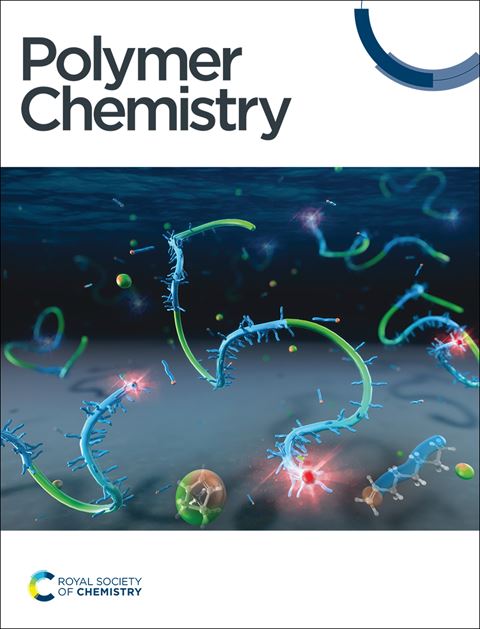1,3-二醚-2-甲基丙烯酸酯与甘油骨架:可调树脂立体光刻3D打印
IF 3.9
2区 化学
Q2 POLYMER SCIENCE
引用次数: 0
摘要
与生物燃料生产相关的大量甘油使其成为各种新分子的有趣底物。我们之前的工作已经证明了具有甘油骨架的对称和不对称1,3-二醚-2-丙醇化合物的可控和可扩展合成,这些化合物可作为进一步化学修饰的多功能中间体。现在我们证明了1,3-二醚-2-丙醇化合物是在温和的催化条件下通过与甲基丙烯酸酐的Steglich酯化反应合成相应的甲基丙烯酸酯单体的有用构件。然后使用消费者级打印机成功地将所得的甲基丙烯酸酯单体3D打印为整齐的树脂。对打印材料的热性能和力学性能进行了深入的研究。3d打印的1,3-二氧基丙烷-2-甲基丙烯酸酯(MAA-DEP)样品具有良好的力学和热性能组合,抗拉强度为1.61 MPa,断裂伸长率为143%,玻璃化转变温度(Tg)接近0℃。MAA-DEP单体的一个显著特点是它能溶解聚苯乙烯(PS)。因此,甘油基(甲基)丙烯酸酯单体不仅为3D打印树脂提供了具有可调性能的新分子,而且还通过展示甘油衍生丙烯酸酯如何具有溶剂化能力将(废)热塑性塑料纳入sla可打印配方,从而在增材制造方面取得了进步。本文章由计算机程序翻译,如有差异,请以英文原文为准。
1,3-Diether-2-methacrylates with glycerol skeletons: tunable resins for stereolithography 3D printing†
The abundance of glycerol associated with biofuel production makes it an interesting substrate for a variety of new molecules. Our prior works have demonstrated the controlled and scalable synthesis of symmetric and asymmetric 1,3-diether-2-propanol compounds with a glycerol skeleton, which serve as versatile intermediates for further chemical modifications. Now we demonstrate that 1,3-diether-2-propanol compounds are useful building blocks to synthesize corresponding methacrylate monomers via Steglich esterification with methacrylic anhydride under mild catalytic conditions. The resulting methacrylate monomers were then successfully 3D printed as neat resins using a consumer-level printer. The thermal and mechanical properties of the printed materials were thoroughly investigated. The 3D-printed samples of 1,3-diethoxypropan-2-yl methacrylate (MAA-DEP) possessed good combinations of mechanical and thermal properties, with a tensile strength of 1.61 MPa, elongation at break of 143%, and a glass transition temperature (Tg) near 0 °C. A notable feature of the MAA-DEP monomer is its ability to dissolve polystyrene (PS). Thus, glycerol-based (meth)acrylate monomers present not only new molecules for 3D printing resins with tunable properties but also offer advancements in additive manufacturing by demonstrating how glycerol-derived acrylates also have solvating power to incorporate (waste) thermoplastics into SLA-printable formulations.
求助全文
通过发布文献求助,成功后即可免费获取论文全文。
去求助
来源期刊

Polymer Chemistry
POLYMER SCIENCE-
CiteScore
8.60
自引率
8.70%
发文量
535
审稿时长
1.7 months
期刊介绍:
Polymer Chemistry welcomes submissions in all areas of polymer science that have a strong focus on macromolecular chemistry. Manuscripts may cover a broad range of fields, yet no direct application focus is required.
 求助内容:
求助内容: 应助结果提醒方式:
应助结果提醒方式:


